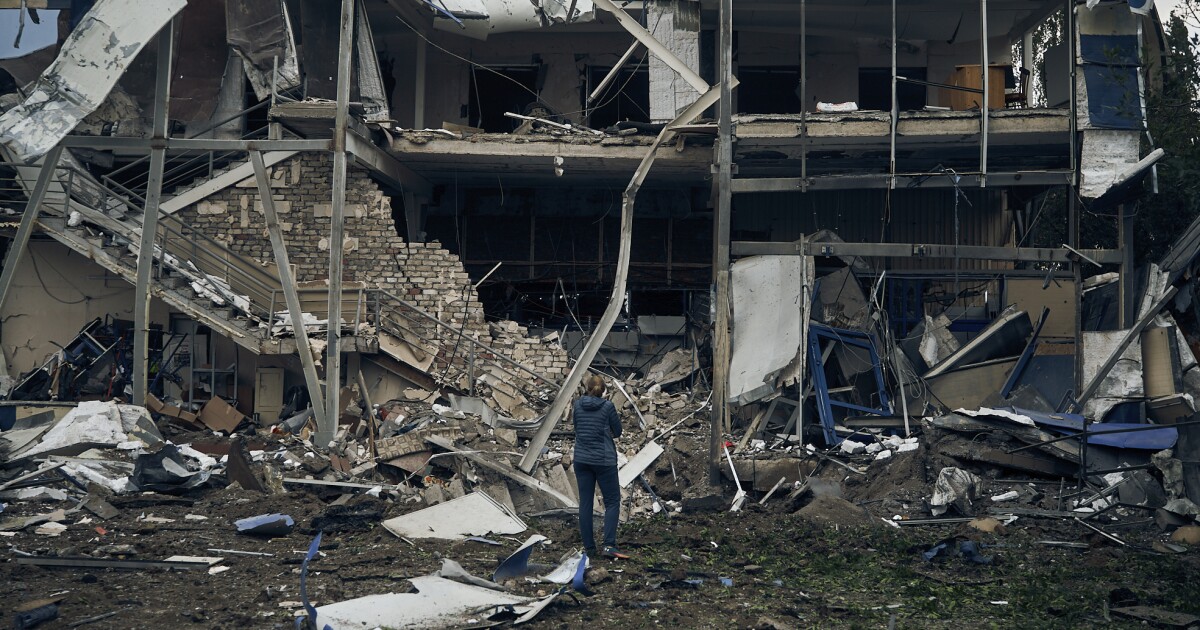

Russian President Vladimir Putin directed forces to invade neighboring Ukraine on Feb. 24, expecting to dispose of any resistance easily on the way to ousting the current government in the capital, Kyiv, in a matter of days or weeks. The United States expected the same thing, but it didn’t happen.
Six months after Putin made that decision — a year ago Wednesday, coinciding with Ukrainian Independence Day — Ukrainian President Volodymyr Zelensky is still in power. He remains in Kyiv, which is not currently under an immediate threat, because the Ukrainian resistance was able to withstand Russia’s initial push until Moscow was forced to refocus its line of attack.
“The first lesson, and it’s more of a reminder, is that motivation and leadership matter in warfare, and there’s perhaps no greater motivating factor to fight than to defend one’s village, family, city, or country,” Luke Coffey, a foreign policy expert at the Hudson Foundation, told the Washington Examiner in an interview. “Many were underestimating President Zelensky’s leadership, his willingness to lead the defense of the nation from the heart of the capital, even though people like President Biden were trying to convince them to leave for his own safety.”
SEE IT: RUSSIAN FORCES SHIELD MILITARY VEHICLES INSIDE UKRAINIAN NUCLEAR PLANT
John Hardie, an analyst for the Foundation for Defense of Democracies, said the U.S. has to “downgrade” its assessments of the Russian military’s capabilities but also cautioned that “taking the first phase [of the war] at face value will probably be a mistake as well.” He also argued that Russia didn’t put its “best foot” forward with its initial assault due to decisions made based on “faulty assumptions and biases and prejudices about Ukraine.”
Once the Russians withdrew their forces from the outskirts of the capital, they refocused their effort on gaining territory in the Donbas, the eastern part of Ukraine where pro-Russian forces have fought for nearly a decade. Russia has been able to gain territory in the area, though it’s come at a slow, incremental pace that was not proportional to the amount of resources spent and lives lost.
“In the next couple of months, I expect that we will see a continuation of Russia making very small gains in the east at a disproportionately high cost to manpower,” Coffey added. “I think we’re seeing the beginning stages of a Ukrainian offensive in southern Ukraine around Kherson.”
“I would say that you are seeing a complete and total lack of progress by the Russians on the battlefield. So in that sense, we are at a different phase than we — where we were even a couple of months ago,” a senior defense official told reporters last week. “You’re seeing the Russians still paying, you know, a high price with Ukrainian attacks. … They are incurring these costs and not able to advance.”
Weapons and training from Western countries, led by the U.S., have provided a dramatic shift in Ukraine’s continued ability to hold Russian forces back while, in recent weeks, they have been planning counteroffensive attacks in the south as Russia has sought to stymie that maneuver. The U.S. is expected to announce its largest aid package to date, an estimated $3 billion, on Wednesday to coincide with the anniversary.
The U.S. military assistance has included more than 1,400 Stinger, 8,500 Javelin, and 27,000 other anti-armor systems; more than 700 Switchblade tactical drones, 126 155 mm Howitzers and up to 561,000 105mm artillery rounds; two National Advanced Surface-to-Air Missile Systems, or NASAMS, and munitions; and 20 Mi-17 helicopters among much else.
CLICK HERE TO READ MORE FROM THE WASHINGTON EXAMINER
In addition to the war on the front lines, Russia has continued to target civilian infrastructure and Ukrainian civilians at large, raising concerns about war crimes and violations of international law. More than 13,000 Ukrainian civilians have been killed or injured in the war, according to the United Nations, though the agency warns that their estimate is likely much lower than the actual total. The death toll is 5,587 and the wounded total is up to 7,890, per the U.N. Office of the High Commissioner.
More than 140,000 residential buildings have been destroyed or damaged, which has left more than 3.5 million Ukrainians homeless, the Ukrainian defense ministry revealed in early August. More than 2,100 educational institutions have been bombed, while 216 of them have been completely destroyed. Another 25 orphanages, group homes, and nursing homes have been damaged by shelling.
Gen. Valerii Zaluzhnyi, the commander in chief of the armed forces of Ukraine, indicated earlier this week that roughly 9,000 Ukrainian soldiers had been killed in the war, which is a small fraction of the Russians’ casualty count. A Pentagon official said earlier this month they believed Russia has between 70,000-80,000 forces killed or wounded in action.





